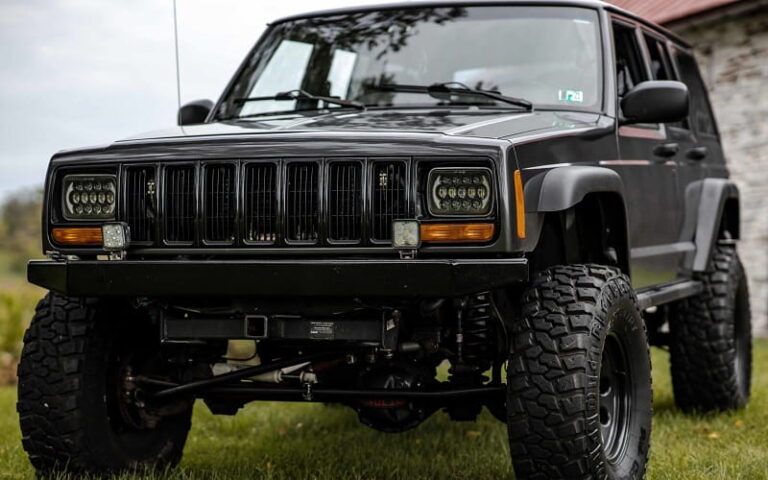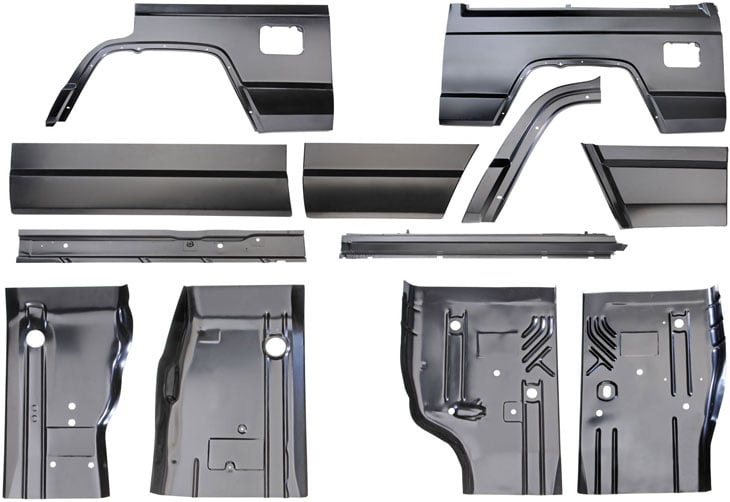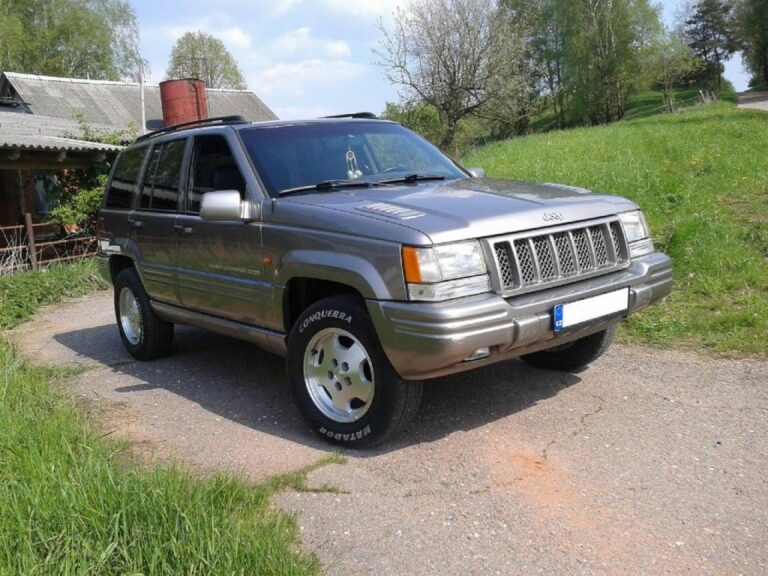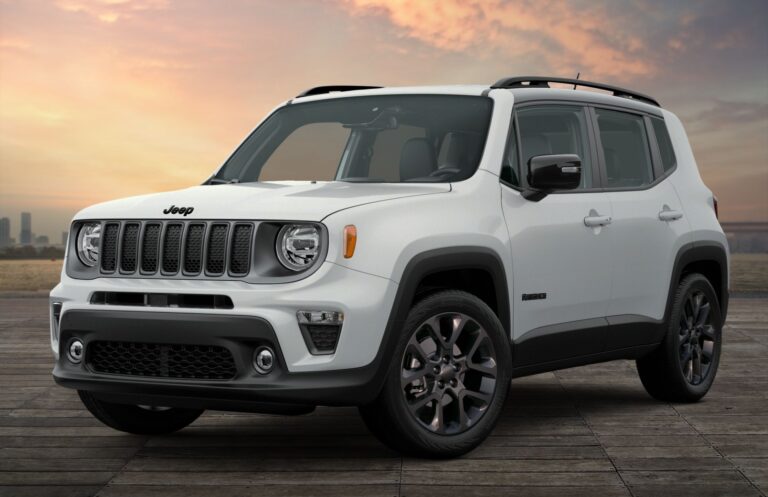1997 Jeep Grand Cherokee Laredo: A Deep Dive into a Quintessential SUV
1997 Jeep Grand Cherokee Laredo: A Deep Dive into a Quintessential SUV jeeps.truckstrend.com
The late 1990s were a golden age for the sport utility vehicle, and few models encapsulated the era’s blend of rugged capability and increasing creature comforts quite like the Jeep Grand Cherokee. Among its various trims, the 1997 Jeep Grand Cherokee Laredo stood out as a particularly compelling package, offering a balanced blend of features, performance, and the iconic Jeep spirit. This article will serve as a comprehensive guide to this enduring vehicle, exploring its design, capabilities, ownership considerations, and its lasting legacy.
A Legacy Forged: Understanding the 1997 Jeep Grand Cherokee Laredo
1997 Jeep Grand Cherokee Laredo: A Deep Dive into a Quintessential SUV
The 1997 Jeep Grand Cherokee belongs to the ZJ generation, which debuted in 1993, replacing the beloved but aging XJ Cherokee. The ZJ was designed to elevate the Jeep brand, introducing a more refined ride, a more luxurious interior, and a stronger emphasis on passenger comfort, all while retaining the legendary off-road prowess Jeep was known for.
The Laredo trim was positioned as the popular mid-range option, striking a perfect balance between the base SE model’s simplicity and the upscale Limited’s luxury. It offered a compelling suite of standard features without the premium price tag, making it an incredibly popular choice for families and adventurers alike. Its importance lies in its role as a bridge: a vehicle capable of navigating urban jungles with ease, then tackling challenging trails with surprising confidence.
Design & Interior: The Laredo’s Distinctive Appeal
The 1997 Grand Cherokee Laredo retains the ZJ’s distinctive aesthetic, which has aged remarkably well. Its exterior is characterized by the classic seven-slot grille, round headlights, and a robust, somewhat boxy profile that unmistakably screams "Jeep." The Laredo typically featured color-keyed bumpers and side cladding, giving it a more integrated and sophisticated look compared to the base model’s black trim, but still maintaining a utilitarian edge over the chrome-laden Limited. Standard aluminum wheels further differentiated it.
Inside, the Laredo offered a practical yet comfortable cabin. While it might lack the plush leather of the Limited, its durable cloth upholstery (often available in various colors) was comfortable and hard-wearing. The dashboard layout was logical and user-friendly, with controls easily accessible. Key interior features for the Laredo trim typically included:
- Power windows and door locks
- Air conditioning
- AM/FM stereo with cassette player (CD player often optional)
- Tilt steering wheel
- Cruise control
- Roof rack


The cabin provided ample space for five passengers, and the rear seats could fold down, expanding the cargo area significantly, making it practical for everything from grocery runs to camping trips.
Power and Performance: Engine Options and Drivetrain Systems
The 1997 Grand Cherokee Laredo offered a choice of two robust engines, each catering to different needs:
- 4.0-liter Inline-Six (I6): This legendary AMC-derived engine (often referred to as the "4.0L High Output") was the standard powerplant. Renowned for its bulletproof reliability, strong low-end torque, and ease of maintenance, it produced 185 horsepower and 220 lb-ft of torque. While not a speed demon, its torque delivery made it excellent for off-roading and general utility.
- 5.2-liter V8: For those desiring more power and increased towing capacity, the optional 5.2-liter Magnum V8 was available. This engine churned out 220 horsepower and a robust 295 lb-ft of torque, significantly improving acceleration and making the Grand Cherokee a more capable tow vehicle.

Both engines were typically paired with a four-speed automatic transmission (the 42RE for the 4.0L and the 44RE or 46RE for the 5.2L V8).
Jeep’s reputation for off-road capability was upheld by the ZJ’s sophisticated 4×4 systems:
- Selec-Trac (NP242): This part-time/full-time system allowed the driver to choose between 2WD, Part-Time 4WD (for slippery surfaces), Full-Time 4WD (for on-road use with varying traction), and 4-Low. It offered flexibility and was highly regarded for its versatility.
- Quadra-Trac (NP249): This was a full-time 4WD system that automatically distributed power between the front and rear axles as needed, using a viscous coupling. While excellent for on-road stability and mild off-roading, the viscous coupler could wear out over time, leading to issues.
Off-Road Prowess: Capability Beyond the Pavement
Despite its more refined nature compared to its predecessor, the ZJ Grand Cherokee Laredo remained a true Jeep. Its unibody construction, combined with solid axles (Dana 30 front, Dana 35c or Dana 44a rear), provided excellent articulation and durability for off-road excursions. Generous ground clearance and relatively short front and rear overhangs allowed it to navigate challenging terrain with surprising ease. Even in stock form, a well-maintained 1997 Laredo with the right tires can tackle many trails that would stop most modern SUVs in their tracks. This inherent capability is a significant reason for its continued popularity among off-road enthusiasts.
Common Considerations: Reliability and Maintenance
While generally robust, the 1997 Grand Cherokee Laredo, like any vehicle of its age, has its quirks and common issues that prospective owners should be aware of:
- Cooling System: The 4.0L engine is known to run hot, and the cooling system (radiator, water pump, thermostat, fan clutch) should be meticulously maintained to prevent overheating.
- Blend Door Actuator: A common failure point in the HVAC system, leading to a loss of heat or AC control. Repair can be labor-intensive and costly.
- Rust: Especially in salt-belt regions, rust can be an issue on the rocker panels, wheel wells, and sometimes the unibody frame rails.
- Electrical Gremlins: Minor electrical issues, such as faulty window switches, instrument cluster glitches, or wiring harness problems, are not uncommon.
- Quadra-Trac Viscous Coupler: As mentioned, the viscous coupling in the NP249 transfer case can wear out, leading to driveline binding or inconsistent power delivery. A common fix is to swap in an NP242 Selec-Trac transfer case.
- Steering Components: Worn tie rod ends, ball joints, and steering box issues can lead to loose steering.
Regular maintenance is key to a long and happy ownership experience. Fluids, belts, hoses, and suspension components should be checked and replaced as needed.
Buying and Owning Today: A Practical Guide
For those considering a 1997 Jeep Grand Cherokee Laredo today, here’s some practical advice:
- Thorough Inspection: Prioritize vehicles with minimal rust, especially underneath. Check for fluid leaks, listen for unusual engine noises, and inspect the cooling system components.
- Test Drive: Pay attention to transmission shifts (should be smooth), steering feel (no excessive play), and brake performance. Test all electrical components, including windows, lights, and HVAC.
- Maintenance Records: A vehicle with a documented service history is always preferable.
- Parts Availability: Good news! Due to the ZJ’s popularity and the longevity of the 4.0L engine, parts availability is generally excellent and often affordable, both new and aftermarket.
- Consider Your Use: If you plan heavy off-roading, look for a Selec-Trac (NP242) equipped model or factor in a transfer case swap for a Quadra-Trac (NP249) vehicle.
- DIY Potential: These Jeeps are relatively simple mechanically, making them good candidates for DIY repairs and modifications if you’re so inclined.
Enhancing Your ZJ: Popular Modifications and Upgrades
The 1997 Grand Cherokee Laredo is a fantastic platform for customization. Common modifications include:
- Lift Kits: Ranging from mild 2-inch lifts for tire clearance to extreme 6+ inch lifts for serious off-roading.
- Larger Tires: Crucial for improving off-road traction and ground clearance.
- Aftermarket Bumpers and Rock Sliders: For increased protection and recovery points.
- Drivetrain Upgrades: Axle swaps, locker installations, and transfer case upgrades (e.g., NP249 to NP242 swap).
- Cooling System Overhaul: Upgrading radiators, fans, and hoses for improved reliability, especially with the 4.0L.
- Interior Refinements: Modernizing the stereo, adding better seating, or improving sound deadening.
Pricing Guide: 1997 Jeep Grand Cherokee Laredo
Determining a precise price for a 1997 vehicle is challenging, as values fluctuate wildly based on condition, mileage, region, and specific features (engine, 4WD system). The following table provides a general guide:
| Category | Original MSRP (Approx.) | Current Market Value (USD, Approx. Range) | Key Factors Influencing Price |
|---|---|---|---|
| Laredo (4.0L) | $25,000 – $28,000 | Poor Condition: $1,000 – $2,500 | High mileage, significant rust, major mechanical issues, neglected. |
| Fair Condition: $2,500 – $5,000 | Visible wear, some minor issues, average mileage, needs TLC. | ||
| Good Condition: $5,000 – $8,000 | Well-maintained, minimal rust, all systems working, lower mileage. | ||
| Excellent/Collector: $8,000 – $15,000+ | Low mileage, pristine condition, full service history, rare options. | ||
| Laredo (5.2L V8) | $27,000 – $30,000 | (Add ~5-15% to 4.0L prices) | V8 models often command a slight premium due to increased power. |
| Additional Factors | 4WD system (NP242 preferred), maintenance records, region, aftermarket modifications (can add or detract value). |
Note: These are general estimates. Always consult local market listings (e.g., Kelley Blue Book, NADA Guides, classifieds) for more accurate, real-time pricing.
Conclusion
The 1997 Jeep Grand Cherokee Laredo stands as a testament to Jeep’s enduring appeal. It’s a vehicle that successfully blended the rugged capability expected of the brand with a level of comfort and refinement that appealed to a broader market. Today, it remains a fantastic option for those seeking an affordable, capable, and customizable SUV. Whether you’re an off-road enthusiast, a classic car admirer, or simply need a practical daily driver, the ZJ Laredo offers a unique blend of heritage and utility that continues to captivate. Its blend of classic Jeep character and surprising versatility ensures its place as a beloved icon of the late 20th-century SUV boom.
Frequently Asked Questions (FAQ) about the 1997 Jeep Grand Cherokee Laredo
Q1: What is the best engine option for the 1997 Grand Cherokee Laredo?
A1: The 4.0L Inline-Six is widely regarded as the most reliable and easiest to maintain, making it an excellent choice for daily driving and light to moderate off-roading. The 5.2L V8 offers more power and better towing capacity but generally has lower fuel economy.
Q2: How is the fuel economy of the 1997 Grand Cherokee Laredo?
A2: Fuel economy is not a strong suit of these vehicles. Expect around 15-18 MPG combined for the 4.0L I6 and 12-16 MPG for the 5.2L V8, depending on driving conditions, maintenance, and drivetrain.
Q3: What is the towing capacity of the 1997 Grand Cherokee Laredo?
A3: With the 4.0L I6, towing capacity is typically around 5,000 lbs. The 5.2L V8 significantly increases this, often up to 6,500 lbs, making it more suitable for larger trailers. Always check the specific vehicle’s owner’s manual and hitch rating.
Q4: Are parts readily available for the 1997 Grand Cherokee Laredo?
A4: Yes, parts availability is excellent. Due to the ZJ’s popularity and the widespread use of its engines (especially the 4.0L), both OEM and aftermarket parts are widely available and generally affordable.
Q5: How long can a 1997 Jeep Grand Cherokee Laredo last?
A5: With proper maintenance, these vehicles are known to be incredibly durable. It’s common to see 4.0L models with over 200,000 or even 300,000 miles still running strong. The key is consistent fluid changes, addressing cooling system issues proactively, and regular inspections.






